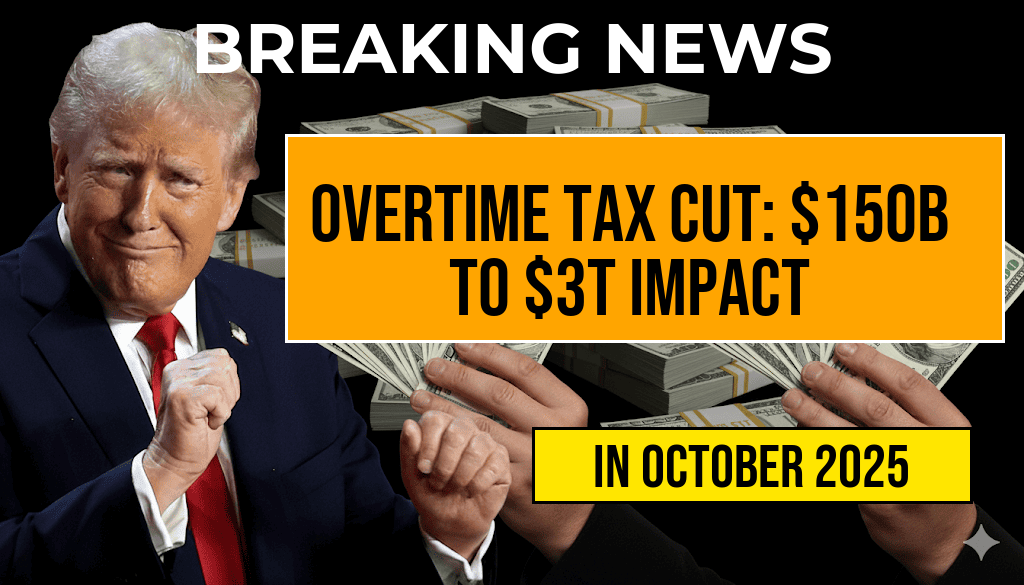The potential elimination of taxes on overtime pay has sparked considerable debate among economists and policymakers, with estimates suggesting that this change could cost the federal government between $150 billion and $3 trillion over the next decade. The implications of a tax-free overtime structure for American workers are profound, particularly as it relates to take-home pay. As discussions continue in Congress regarding this transformative proposal, it is essential for employees to understand how these changes could impact their finances, including the potential benefits of increased disposable income and the broader economic ramifications of such a policy shift.
Understanding Overtime Taxation
Overtime pay, defined as compensation for hours worked beyond the standard 40-hour workweek, has long been subject to federal and state income taxes. Under current regulations, employees earning overtime pay see a portion of their earnings taxed, which can significantly reduce the financial benefits of working extra hours. The proposed tax cut aims to eliminate this taxation, effectively allowing workers to retain more of their earnings.
The Economic Impact of a Tax-Free Overtime
Proponents of the tax-free overtime model argue that the initiative could lead to greater economic stimulation. Here are some potential effects:
- Increased Take-Home Pay: By removing taxes on overtime, workers would see an increase in their net earnings, thereby enhancing their spending power.
- Boost to Consumer Spending: With more disposable income, employees are likely to spend more, which can invigorate local economies.
- Job Growth: Increased demand for goods and services may lead businesses to hire more employees, potentially reducing the unemployment rate.
Financial Implications for the Average Worker
To illustrate the potential financial benefits, consider a worker earning an hourly wage of $25 who works 10 hours of overtime per week. Under the current tax structure, the worker’s overtime pay is subject to federal and state income taxes, which can amount to around 25% to 30% in total taxes, depending on the individual’s tax bracket and state of residence.
| Hours Worked | Hourly Wage | Overtime Pay | Tax Rate | Take-Home Pay (With Tax) | Take-Home Pay (Without Tax) |
|---|---|---|---|---|---|
| 10 | $25 | $375 | 30% | $262.50 | $375 |
In this scenario, the worker would take home $112.50 less each week due to taxes on overtime. Under a tax-free overtime policy, that amount represents a significant increase in weekly earnings, which translates to an additional $4,500 annually for this worker, assuming consistent overtime hours.
Potential Costs to the Federal Government
While the benefits to individual workers may be clear, the broader economic implications include significant costs to the federal government. Estimates of the financial impact range widely, with some analyses suggesting a cost as low as $150 billion and others predicting up to $3 trillion over ten years. This discrepancy arises from various factors, including the number of employees who would be eligible for overtime and the overall impact on tax revenues.
Balancing Act: Benefits vs. Costs
Policymakers must weigh the potential economic benefits of increased consumer spending against the substantial loss of tax revenue. The proposal has garnered support from labor unions and workers’ rights advocates, who argue that the move is essential for enhancing the financial well-being of the middle class. However, critics express concerns about the sustainability of such a tax cut and its implications for funding essential government services.
Conclusion
The conversation around tax-free overtime is just beginning, but its implications for American workers and the economy are significant. As discussions unfold in Congress, employees and employers alike are urged to stay informed about how these changes could affect take-home pay and overall economic health.
For further insights into this topic and ongoing updates, you can visit Forbes and Wikipedia.
Frequently Asked Questions
What is the proposed overtime tax cut?
The proposed overtime tax cut aims to eliminate federal taxes on overtime pay, allowing employees to keep more of their earnings when they work beyond regular hours.
How much could the overtime tax cut cost the government?
Estimates suggest that the overtime tax cut could cost the government anywhere between $150 billion and $3 trillion over the next decade, depending on the implementation details and economic impact.
Will the overtime tax cut affect all workers?
While the overtime tax cut is intended for those who qualify for overtime pay, its impact will vary by industry and job type, meaning not all workers will benefit equally.
How will the overtime tax cut affect my take-home pay?
If implemented, the overtime tax cut could significantly increase your take-home pay by allowing you to retain the full amount of your overtime earnings without federal tax deductions.
What are the potential economic implications of the overtime tax cut?
The economic implications include potential increases in consumer spending due to higher take-home pay, but there are concerns about how the loss of tax revenue could impact government services and programs.













